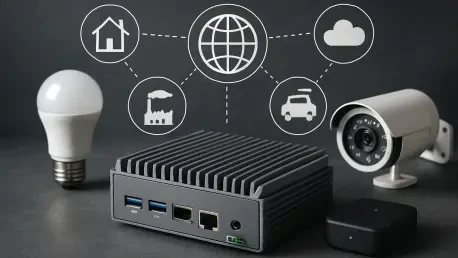Imagine a world where businesses can predict customer needs, detect operational issues, and respond to market shifts in the blink of an eye, all thanks to the power of real-time data processing. Streaming analytics, the technology that enables immediate analysis of data as it flows, is rapidly becoming a cornerstone for companies aiming to stay ahead in an increasingly connected and data-driven landscape. With the market projected to grow from USD 4.34 billion in 2025 to USD 7.78 billion by 2030, reflecting a compound annual growth rate (CAGR) of 12.4%, the implications for industries are profound. This remarkable trajectory underscores the urgency for organizations to harness continuous data streams for instant decision-making. From retail to industrial automation, the ability to process information on the fly is transforming how enterprises operate, offering a competitive edge in dynamic environments. As technology evolves, understanding the impact of this innovation becomes essential for future-focused strategies.
The Role of IoT and Edge Computing in Real-Time Insights
The explosion of the Internet of Things (IoT) and connected devices stands as a primary driver behind the rise of streaming analytics, reshaping business operations across multiple sectors. Billions of sensors, devices, and telemetry systems generate relentless streams of data that demand immediate processing to be actionable. This is particularly vital in applications like autonomous vehicles or smart surveillance, where delays can lead to significant risks. Edge computing complements this by analyzing data closer to its source, slashing latency and easing bandwidth constraints. By filtering and summarizing information before it reaches central cloud servers, edge solutions prevent network overload and enhance efficiency. This synergy allows companies to extract insights at unprecedented speeds, enabling swift responses to emerging trends or anomalies. As a result, industries can optimize everything from supply chains to customer interactions, ensuring they remain agile in fast-paced markets.
Beyond the technical advantages, the integration of IoT with edge computing fosters a new level of operational intelligence for businesses navigating complex environments. This combination empowers organizations to move beyond reactive measures, embracing predictive and proactive strategies instead. For instance, in manufacturing, real-time data from machinery can signal maintenance needs before breakdowns occur, minimizing downtime and costs. Similarly, in smart cities, traffic data processed at the edge can instantly adjust signal timings to reduce congestion. Such capabilities highlight how these technologies are not just tools but transformative forces that redefine decision-making processes. With the volume of connected devices expected to grow exponentially by 2030, the reliance on streaming analytics to manage this data deluge will only intensify, pushing companies to invest in robust systems that can handle the scale and speed required for success.
AI and Machine Learning as Game Changers
Artificial Intelligence (AI) and Machine Learning (ML) are revolutionizing streaming analytics by unlocking deeper, predictive insights from continuous data flows, making them indispensable for modern enterprises. These technologies excel at identifying patterns, detecting anomalies, and forecasting trends in real time, which is crucial for sectors like retail, where personalized customer experiences can drive sales, or telecommunications, where network issues must be resolved instantly. AI-driven platforms process incoming data with remarkable precision, enabling businesses to adapt to changing conditions on the spot. This capability transforms raw information into strategic assets, allowing for dynamic pricing models or immediate fraud detection in financial transactions. As these tools become more sophisticated, their integration into streaming platforms positions them as critical components for staying competitive in data-intensive industries.
Moreover, the adoption of AI and ML in streaming analytics is accelerating innovation by enabling businesses to anticipate rather than merely react to market demands. Consider how e-commerce platforms can analyze browsing behavior as it happens, tailoring recommendations before a customer even searches for a product. Similarly, in healthcare, wearable devices streaming patient data can trigger alerts for potential issues, allowing for timely interventions. This predictive power not only enhances operational efficiency but also builds stronger customer trust through personalized, responsive services. With the rapid advancement of algorithms and computing power, the potential for AI and ML to refine real-time analytics will continue to expand, offering businesses unparalleled opportunities to differentiate themselves. By 2030, those who leverage these technologies effectively will likely lead their respective fields, capitalizing on the ability to turn data into actionable foresight.
Cloud Deployment and Regional Growth Dynamics
Cloud-based solutions are emerging as a preferred choice for streaming analytics due to their scalability and cost-effectiveness, addressing the needs of businesses handling vast data volumes. Unlike traditional on-premises systems, cloud platforms offer flexibility to scale resources up or down based on demand, eliminating the need for hefty upfront infrastructure investments. This adaptability is particularly beneficial for small and medium-sized enterprises looking to compete with larger players without breaking the bank. Furthermore, cloud deployment facilitates seamless integration with other digital tools, enhancing the overall analytical ecosystem. As companies increasingly prioritize agility, the shift toward cloud solutions reflects a broader trend of embracing on-demand computing to meet fluctuating data processing needs, ensuring they remain responsive in a fast-evolving market.
Geographically, certain regions are poised to drive significant growth in the streaming analytics market, with North America and Asia Pacific leading the charge through widespread technology adoption. In North America, the push for digital transformation across industries like finance and healthcare fuels demand for real-time data solutions, while Asia Pacific benefits from rapid urbanization and smart city initiatives. Digital payment systems, a key area of expansion in both regions, rely heavily on streaming analytics to detect fraud and optimize transactions instantly. This regional momentum underscores the global relevance of real-time data processing as a tool for economic and technological advancement. By 2030, the influence of these areas will likely shape how streaming analytics evolves, with tailored solutions addressing local challenges while contributing to a broader, interconnected business landscape focused on innovation and efficiency.
Reflecting on a Data-Driven Legacy
Looking back, the journey of streaming analytics has been marked by remarkable strides, as the technology evolved from a niche concept to a fundamental business asset by 2030. The projected growth to USD 7.78 billion reflects not just market expansion but a profound shift in how enterprises value real-time insights. For stakeholders, the next steps involve prioritizing investments in IoT, edge computing, and AI-driven platforms to build resilient, future-ready systems. Exploring partnerships with leading tech providers could accelerate adoption, while focusing on cloud solutions offers a scalable path forward. Additionally, businesses need to consider regional trends, tailoring strategies to capitalize on growth in key markets like North America and Asia Pacific. As the landscape continues to mature, staying ahead means embracing continuous learning and adaptation, ensuring that data remains a catalyst for innovation and competitive advantage in an ever-connected world.









